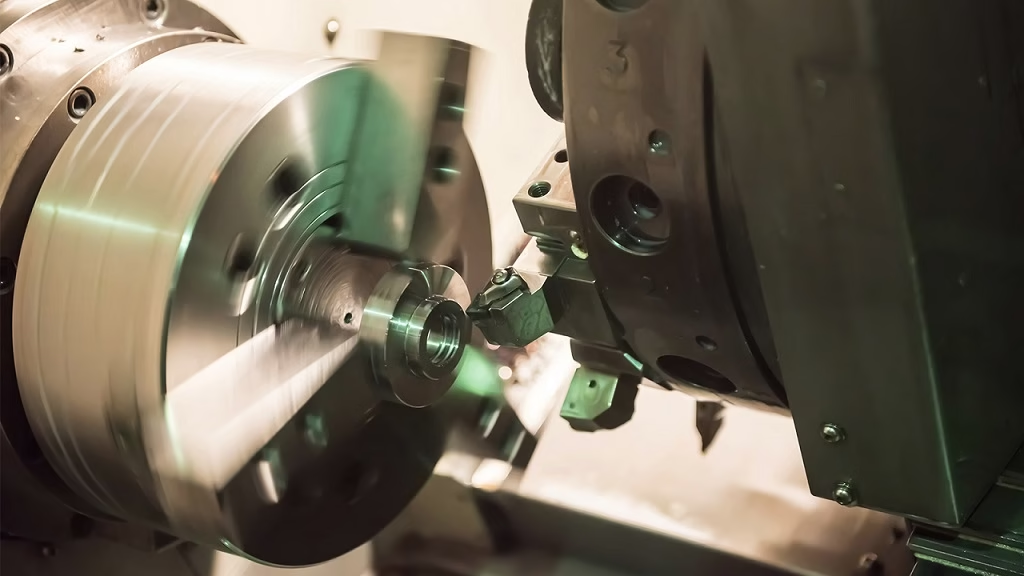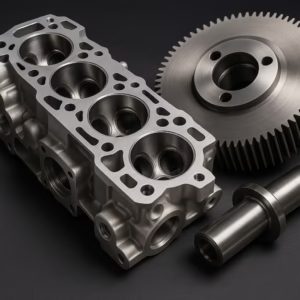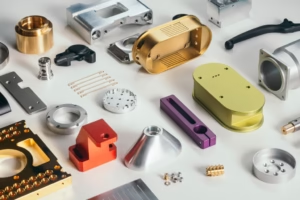The Role of 5-Axis Machining in the Automotive Industry
In the fast-paced world of manufacturing, precision and efficiency are paramount. One technology that has revolutionized the automotive industry is 5-axis machining. This advanced manufacturing technique allows for the creation of complex parts with unparalleled accuracy. In this article, we’ll delve into the intricacies of 5-axis machining, explore its application in the automotive industry, and highlight why manufacturers are increasingly adopting this technology.
Understanding 5-Axis Machining
5-axis machining refers to the capability of a CNC machine to move a cutting tool or workpiece along five different axes simultaneously. These axes include the traditional linear X, Y, and Z axes, complemented by two rotational axes, often referred to as the A and B axes. This expanded range of motion facilitates the efficient and precise machining of complex geometries that would be challenging or impossible with conventional 3-axis systems.
Key Features of 5-Axis Machining
- Increased Precision: 5-axis machines maintain optimal tool-to-part orientation, resulting in tighter tolerances and improved geometric accuracy.
- Complex Geometry Creation: The ability to approach the workpiece from multiple angles enables the production of intricate shapes and undercuts.
- Reduced Setup Times: Multiple faces of a part can often be machined in a single setup, minimizing non-cutting time and potential alignment errors.
- Improved Surface Quality: Continuous 5-axis interpolation allows for smoother toolpaths and more consistent chip loads, leading to superior surface finishes.
The Impact of 5-Axis Machining in the Automotive Industry
The automotive industry relies heavily on precision machining to produce components that meet stringent quality standards. 5-axis machining is particularly beneficial in this sector due to its ability to manufacture complex parts efficiently and accurately.
Applications in Automotive Manufacturing
- Engine Components: The intricate geometries inside a car engine, such as optimized combustion chambers and complex cooling channels, are made possible through 5-axis machining. This technology allows manufacturers to pack more power into smaller spaces, enhancing engine performance.
- Gearboxes: Gearboxes are crucial for transmitting power from the engine to the wheels. 5-axis machining ensures that gears and shafts are manufactured with precision, resulting in reliable and efficient power transmission.
- Suspension Parts: Components like control arms and knuckles benefit from the precision of 5-axis machining, which ensures high strength and lightweight design, contributing to improved vehicle performance.
- Headlights and Taillights: The ability to carve complex shapes out of a solid block without layer lines makes 5-axis machining ideal for producing intricate headlight and taillight designs, enhancing both aesthetics and functionality.
Advantages for Automotive Manufacturers
- Enhanced Reliability: High precision manufacturing ensures that automotive components are more reliable and dependable, reducing the likelihood of failures.
- Time-Efficient Production: The ability to produce small parts in extreme detail and carry out repetitive manufacturing efficiently has made automobiles more readily available in the market.
- Cost-Effective: While the initial setup cost of 5-axis systems is higher, the long-term benefits include shorter turnaround times and reduced labor intensity, leading to overall cost savings.
Insights from Industry Leaders
Leading manufacturers such as Hermle USA Inc. and FANUC have embraced 5-axis machining for its reliability and precision. Hermle’s automated machining centers, equipped with high-tech tool spindles and optimized chip management systems, cater to the automotive industry’s need for fast 3D work and complex machining tasks. FANUC’s 5-axis CNC systems offer advanced controls and error correction features, enhancing efficiency and accuracy in automotive component production.
SEO Best Practices for 5-Axis Machining
When discussing 5-axis machining, it’s essential to follow SEO best practices to ensure the content reaches a wider audience. Here are some tips:
- Meta Descriptions: Craft concise and compelling meta descriptions that summarize the article’s content and include the target keyword.
- Alt Text for Images: Use descriptive alt text for images related to 5-axis machining and automotive components to improve accessibility and search engine indexing.
- Internal/External Links: Incorporate links to authoritative sources, such as industry reports or manufacturer websites, to enhance credibility and provide additional information.
Conclusion
5-axis machining is a game-changer in the automotive industry, offering precision, efficiency, and versatility in manufacturing complex components. As automotive manufacturers strive to meet evolving demands and enhance vehicle performance, the adoption of 5-axis machining continues to grow. By leveraging this technology, manufacturers can produce high-quality parts that contribute to safer, more reliable, and innovative vehicles.
For those interested in exploring the capabilities of 5-axis machining or seeking expert services, consider reaching out to industry leaders-Prototek for tailored solutions.
If you have any needs, contact us via email at Lynnyao@prototekparts.com oder Telefon: +86-0792-86372550
Tags:
- 5-Axis Machining in the Automotive Industry

























































